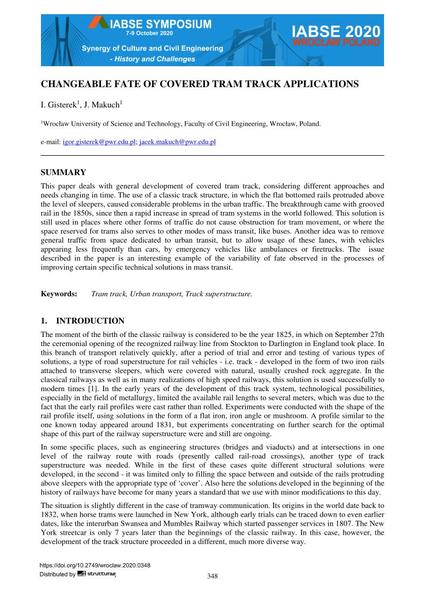Changeable Fate of Covered Tram Track Applications

|
|
|||||||||||
Bibliografische Angaben
| Autor(en): |
I. Gisterek
J. Makuch |
||||
|---|---|---|---|---|---|
| Medium: | Tagungsbeitrag | ||||
| Sprache(n): | Englisch | ||||
| Tagung: | IABSE Symposium: Synergy of Culture and Civil Engineering – History and Challenges, Wrocław, Poland, 7-9 October 2020 | ||||
| Veröffentlicht in: | IABSE Symposium Wroclaw 2020 | ||||
|
|||||
| Seite(n): | 348-355 | ||||
| Anzahl der Seiten (im PDF): | 8 | ||||
| Jahr: | 2020 | ||||
| DOI: | 10.2749/wroclaw.2020.0348 | ||||
| Abstrakt: |
This paper deals with general development of covered tram track, considering different approaches and needs changing in time. The use of a classic track structure, in which the flat bottomed rails protruded above the level of sleepers, caused considerable problems in the urban traffic. The breakthrough came with grooved rail in the 1850s, since then a rapid increase in spread of tram systems in the world followed. This solution is still used in places where other forms of traffic do not cause obstruction for tram movement, or where the space reserved for trams also serves to other modes of mass transit, like buses. Another idea was to remove general traffic from space dedicated to urban transit, but to allow usage of these lanes, with vehicles appearing less frequently than cars, by emergency vehicles like ambulances or firetrucks. The issue described in the paper is an interesting example of the variability of fate observed in the processes of improving certain specific technical solutions in mass transit. |
||||
